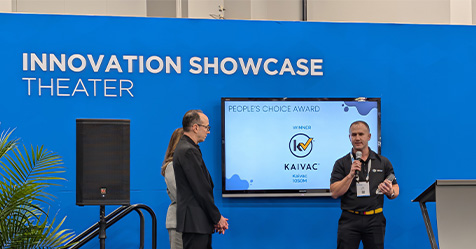There is opportunity and good profit to be made in cleaning health care facilities, which include doctor, dentist, and other professional medical offices and buildings. Other locations that require similar levels of service include labs, pharmacies, dialysis centers, and research, medical, and pharmaceutical manufacturing facilities. Larger facilities include hospitals, nursing homes, assisted living, and hospice centers, while closely related locations include daycare, child development centers, and health clubs.
These facilities require a more precise level of cleaning than office buildings because of issues related to regulation, liability, medical treatment, contamination, and infection control. Other concerns include hazardous chemicals, sharps—such as needles and glass—plus the collection and disposal of various types of medical waste. Patient confidentiality, noise levels, health care-associated infection (HAI) rates, and patient surveys are also important issues in health care facilities. The responsibility and risks inherent in these accounts should not be taken lightly; the possibility of illness, death, and liability looms if contractors do not follow proper procedures.
What’s Different in Health Care Facilities?
Health care facilities, by their very nature, pose a number of challenges to building service contractors, including how they should be cleaned and the risks that workers will face.
Challenges in these facilities include:
Training. Due to physical and health-related risks, the technical nature of the work, and the required documentation and supervision, intensive orientation and ongoing training are required.
Documentation. Checklists, written standard operating procedures, and sign-off sheets are commonly used to track and validate that work is completed as specified.
Supervision and management. Contractors must supervise employees in health care facilities, as these environments do not tolerate errors. Multiple government and private agencies, such as The Joint Commission, Department of Labor and Industries, Occupational Safety and Health Administration, the health department, and others, monitor, audit, inspect, and approve the operation and funding of health care facilities. These groups often require testing to validate cleaning results are to specification. Such testing can include the use of an adenosine triphosphate (ATP) meter, tribometer, gloss meter, particle counter, or other scientific instruments.
Risk and liability. Cleaning in health care environments poses greater risks due to the nature of the work, which includes potential exposure to infectious materials, medical-waste disposal, and increased risk of slip, trip, and fall injuries to cleaners, the public, and facility staff. Be sure to discuss your insurance coverage and costs with your agent before beginning to verify that you have adequate protection.
Sensitivity. Patients are often sick, stressed, and uncomfortable in these locations; you must take this into consideration when working in medical facilities. People handle stress differently, and are not always in an understanding mood. Workers need to be aware of these factors and be considerate of other building occupants. A smile, a quiet “hello,” and a “may I help you?” attitude can go a long way in making everyone’s experience as pleasant as possible. Also, remember you are dealing with doctors, nurses, and other educated professionals who take their work responsibilities and time seriously.
What You Need to Know
The basic services offered when cleaning health care facilities won’t vary much from other facilities and can include basic office, restroom, and common-area cleaning.
- Specialized services are required for more sensitive areas such as labs, patient, exam, procedure, and operating rooms, etc. When it comes to selling your services, consider starting small and growing over time as you gain additional knowledge and credibility. You may include window cleaning, pressure washing, carpet cleaning, and hard floor care in your services or offer them for an extra charge.
- Production rates will depend on what areas you clean, and can range from 1,500 to 3,000 or more square feet per hour. Office areas can be bid at the same rates as other office areas. Exam and procedure rooms tend to be more challenging and time-consuming, as you will clean and disinfect exam tables, and add new paper (if used). You may need to dump or replace a sharps box and bio waste container; disposing medical waste is regulated and must be handled in a specific manner, which may include bagging, weighing, tagging, and storing in a color-coded container. Medical waste cannot be placed with normal trash; a certified disposal firm must pick up and transport it accordingly. Cost is based on poundage and the type of waste. Include these costs in your bid after doing the proper research to see how each type of waste must be handled in your area and the actual cost of disposal.
Unique Areas to be Cleaned
Cleaning areas where blood and body fluids are commonly present, such as operating suites, will be performed at much slower rates—anywhere from 500 to 1,500 square feet per hour. A team of two or three people may clean busy medical centers that have several operating rooms, to reduce down time and ensure cases remain on schedule.
Specific patient rooms may be set aside for patients with highly-infectious or very sensitive cases, and will require more time and a complete clean between cases. Average times for room turnovers range from 15–20 minutes to more than an hour for a complete clean of an isolation room.
Other Considerations
Costs are generally higher in the health care market, as management and staff’s expectations are higher than in other commercial facilities. The more specialized the area and work performed, the higher the wages you must pay and the more you will need to charge—often 10–30 percent above minimum wage. Take into account the cost of background checks, employee badges, uniforms, and vaccinations when bidding health care locations.
Security and confidentiality are also a concern and require special training and awareness. Cleaning staff must maintain confidentiality about the activities and occupants in health care facilities.
Resources
For additional resources on cleaning health care environments, consult the International Executive Housekeepers Association (www.ieha.org) and the Association for the Healthcare Environment (www.ahe.org).




